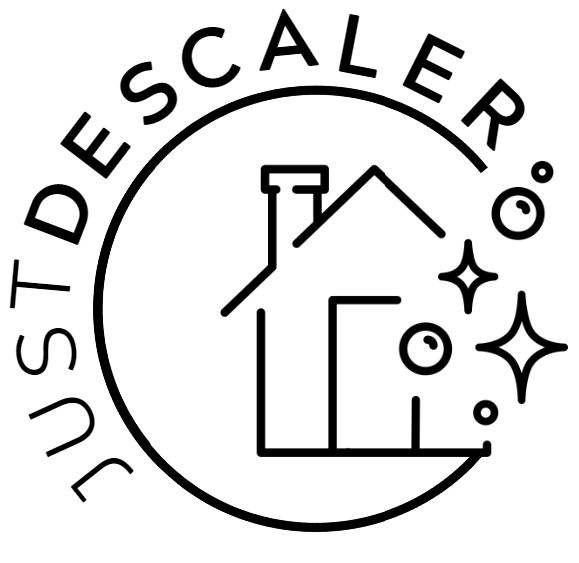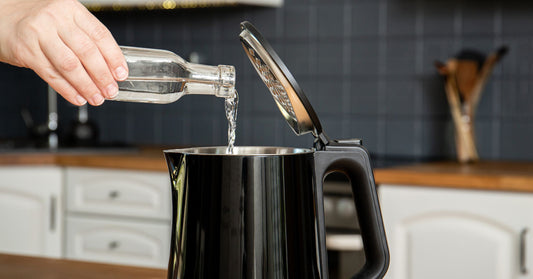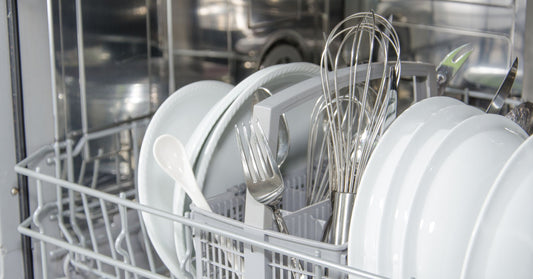If you're like most people, you rely on your household appliances to make your daily life more comfortable and convenient. Appliances that use water, such as coffee makers, kettles, and washing machines, are especially essential in our daily routines, however, when not properly maintained, these appliances can become less efficient, suffer damage, and even pose health risks.
The water that flows through your appliances may contain minerals like calcium, magnesium, and other elements that can accumulate over time and form a hard, scaly layer called limescale.
Limescale is a chalky deposit that can have adverse effects on the performance and longevity of your appliances. The build-up can restrict the flow of water, causing your appliance to work harder and consume more energy. Over time, this can lead to decreased efficiency and even damage to the appliance's components. Moreover, the accumulation of limescale can harbour bacteria, which can pose a health risk when not properly treated.
Therefore, it's important to keep an eye out for signs that indicate that your appliance needs descaling.
What To Look Out For
It's a good idea to pay attention to signs that your appliance might need descaling. These can include things like reduced water flow, weird noises coming from the machine, water spots and stains, and funky smells. If you spot any of these things, it's important to act right away to prevent any more damage and make sure your appliance works as well as possible.
Reduced Efficiency
One of the most common signs that your appliance needs descaling is a decrease in efficiency. If you notice that your appliance is taking longer to complete its tasks or is producing weaker results than usual, it may be due to the build-up of limescale.
Limescale reduces the efficiency of your machine in two ways: by restricting the flow of water and by reducing the heat transfer.
When limescale builds up inside the pipes or inside your appliance, it restricts the flow of water, so it takes a lot more effort to get the water to where it needs to be. And, since it also reduces the flow of heat, it takes a lot more energy to heat the water in your appliance when the heating element is covered in mineral build-up. Not only does this also reduce the energy efficiency, increasing your bills as a result.
Strange Noises
Another sign that your appliance needs descaling is strange noises during operation. If your appliance produces unusual sounds like banging or rattling, it may be a sign that there is a blockage caused by limescale build-up. The blockage can prevent water from flowing smoothly through the appliance, causing it to vibrate or make unusual sounds.
Water Spots and Stains
Limescale build-up can cause water spots and stains on your appliances. These stains are often white or brown in colour and can be difficult to remove. They are caused by the minerals in the water bonding with the surface of the appliance, leaving a visible residue. In addition to being unsightly, these stains can also be a nuisance as they can make it difficult to read dials or see the contents of an appliance.
Unpleasant Odours and Taste
Bad odours are often caused by the build-up of bacteria in the limescale, which can produce a foul smell. Not only that, but hard water mixed with limescale can also affect the taste of the water, and the taste of your morning tea or coffee.
So How Do I Remove Limescale?
So, what can you do if you notice any of these signs? The solution is to descale your appliance, which involves removing the build-up of limescale.
There are various descaling products available on the market, including vinegar, lemon juice, and commercial descaling solutions. It's important to choose a product that is suitable for your appliance and follow the manufacturer's instructions carefully.
Before you start the descaling process, make sure to prepare your appliance. This may involve removing any filters, emptying the water tank, and cleaning any visible limescale build-up.
The descaling process will depend on your appliance, but typically involves filling the water tank with the descaling solution and running the appliance through a cycle. You may need to repeat the process several times to completely remove the limescale build-up.
After descaling, it's important to rinse and clean the appliance thoroughly to remove any remaining traces of the descaling solution. This will help to prevent any damage to the appliance or any unpleasant odours.
In conclusion, limescale build-up is a common problem in appliances that use water. If you notice any signs of limescale build-up, it's important to address the issue promptly by descaling your appliance. By following the manufacturer's instructions and choosing the right descaling product, you can remove the build-up of limescale and restore your appliance to its optimal performance.




